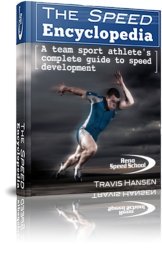Creating A Meal Plan
Creating a meal plan for football training has several benefits:
First, Its serves as a grocery budget. You can plan every single meal or snack into it to make sure there are no surprises to your wallet. Trips to the grocery store are that much easier.
Second, it makes recording your calories and macronutrients easier. If you already know what you've scheduled to eat for Tuesday, all you have to do is make sure you eat everything for that day and mark it down.
Another great thing about a football meal plan is how you can use foods that fit your tastes and your goals. If you keep variety and nutrition in your football diet plan, while making sure you actually like the food, it will be easier to stick to.
The Right Foods
When it comes to scheduling, you first want to make sure you start with the right kinds of foods. Here are some guidelines to go by when you're making your grocery list:
- Eat more complex carbs, and try to keep simple or refined sugars to a minimum. To be more precise, about seventy percent (70%) of your carbs should be of the complex variety.
- If you use oils, keep them high in unsaturated fats and HDL's (high-density lipoproteins); and low in cholesterol and LDL's (low-density lipoproteins)
- Drink plenty of water; 96oz. to 1 gallon per day.
- Lean meats, like chicken, turkey, tuna, and salmon should take priority over the more fatty meats like beef and pork. You should keep some red meat in your diet for iron.
- Go for a variety when choosing your veggies: orange, red, yellow, green, etc. Keeping the whole range of veggies in your diet, will ensure that you get the wide range of nutrients those veggies provide.
- The same goes for your fruits. Apples, oranges, peaches, melons, bananas. Keep variety in your daily plan so you don't get bored with eating the same stuff everyday.
Examples of complex carbs include starches, grains, and fiber. Whole grain breads, instead of refined flour breads, are the way to go.
The Right Amounts
Next, your daily caloric balance is considered. For example, if your need to consume 4000 calories (in order to keep up with your daily caloric burn), then make sure to plan 4000 calories or more into your meal plan for that day.
Don't plan for 3600 while burning 4000 unless you're trying to burn fat. Why? Because a negative calorie balance can leave you hungry, which makes room for the low nutrition, energy-dense (junk) food.
A negative calorie balance also makes it hard to put on muscle if you're in your muscle building phase.
Record Your Meals
Recording your caloric intake is an important part of your training program. It helps to make sure you're getting an adequate number of calories and in the right proportions.
Recording also tells you how you should adjust your diet based on what your eating or on the type of results you get with your body.
For example, if after a few weeks you find that your body fat percentage has increased, then you know that your body is storing fat. It can only store fat when that fat is not being burned. Therefore you need to decrease the amount of calories your consuming.
Make Adjustments
You will probably find in your recording that you're not eating the right proportions of protein, carbs, or fats that you should be. Fortunately, you can change that with some tweaks to your meal plan.
How To Record Your Diet
When recording, any kind of notepad or notebook will do. If you have some kind of electronic device you can use, like a PDA or iPod, that will work as well. Spreadsheet software, like Excel or Calc (OpenOffice.org) are also great tools for keeping tabs on your eating habits.
You should record the amount of grams and calories of protein, carbs, and fats you consume on a meal-by-meal basis.
You can get more in-depth if you need to, by including the types of carbs, fats, or micronutrients if possible.
The key is to record your food right after you eat it. Waiting until later will no doubt cause you to miscalculate your intake. Sometimes we remember things how we would have liked them to be instead of how they really happened.
Whatever tools you decide to use, remember that consistency is the key. Becoming a Great Cornerback doesn't happen overnight. Certain things have to line up, and your nutrition is a big one.













New! Comments
Have your say about what you just read! Leave me a comment in the box below.